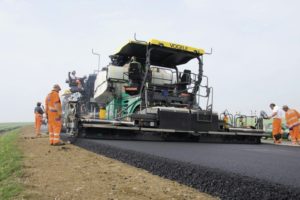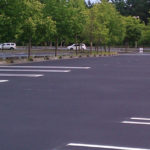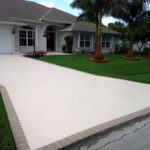Best Asphalt Pavement Method
 There are many asphalt method available. The main question is which one is the best one? This really depends on each case of asphalt cases. However, there are some key considerations and critical points in having a good asphalt driveway, namely adequate foundation, proper drainage, appropriate materials, good construction practices; and timely maintenance. Further explanation of each one is as follows.
There are many asphalt method available. The main question is which one is the best one? This really depends on each case of asphalt cases. However, there are some key considerations and critical points in having a good asphalt driveway, namely adequate foundation, proper drainage, appropriate materials, good construction practices; and timely maintenance. Further explanation of each one is as follows.
Adequate foundation
Preparing an adequate foundation includes having a solid subgrade and building a strong aggregate base. In this stage, a common problem is a subgrade that is not properly stabilized. Bad preparation on driveways in some subdivisions will result in construction (truck) traffic ruining the driveway. Driveway pavements can get buckled by truck traffic. In addition to that, Soft dirt is a real issue and this need to get rid of the soft top-soil and get to something solid. Around new homes, around the sides of the house and around the garage, you get backfill that hasn’t been compacted. It’s soft dirt. You have to replace it with something solid Putting down a rock base before placing the hot mix is critical. The size or thickness of the rock makes a difference.
Proper drainage
This is vital because Problems develop when water removal is not sufficient. It is recommended using a French drain (a trench filled with gravel or rock with a pipe designed to redirect water) to get moisture away from the pavement below the pavement level. It is imperative to have a slope to the pavement so the water will run off to the side in a sheet. Good drainage means lasting pavement.
Appropriate materials
It is important to use the right asphalt mix. Opinions differ as to what makes the best driveway mix. In general, driveway mixes should be designed with more asphalt binder and fewer air voids than highway mixes. The aggregate structure is where opinions differ.
Many experts prefer that driveway surface mix have a finer gradation than highway mix. This gives a finer surface texture and smooth appearance. Siler prefers a mix composed of good angular aggregate with stone-on-stone contact (sometimes called aggregate interlock).
The choice of gradation depends on the loading and desired appearance. Finer gradings will shed more water and look more uniform. Stony mixes can carry heavier loads and require thicker placement depths for compactibility. Use a 2-inch compacted binder course (with larger top-size stone) on farm driveways because it can take heavier loads.
Good construction practices
Good workmanship is important, so the driveway will last. Compaction is critical, including the edges and joints of the pavement. Tamp the edges of the pavement and make the seams (joints) look good — tight and good. It’s important to avoid segregation of the mix because a segregated mix can lead to potholes and pavement failures.
Timely maintenance
Recommended maintenance treatments include taking care of the drainage features and crack-sealing. Overall pavement sealing is a matter of choice and wear-and-tear.
Water is the enemy of pavements. Proper installation of drainage at the time of construction is important, but it is equally important to assure that the drainage continues to work. Water can soften the subgrade and/or undermine the pavement.
Crack-sealing is an important part of maintaining the driveway pavement. Water and foreign material can enter the pavement and cause damage if the cracks are not sealed. Some owners do not like the appearance of sealed cracks.
In addition to sealing the driveway for appearance purposes, sealing can be used to preserve the pavement. Fuel-resistant, polymer-modified asphalt sealers can guard against spills. Stony mixes or pavements with open textures benefit from sealing.
Contact us
 Phone Call |
 Text Message |
 |







